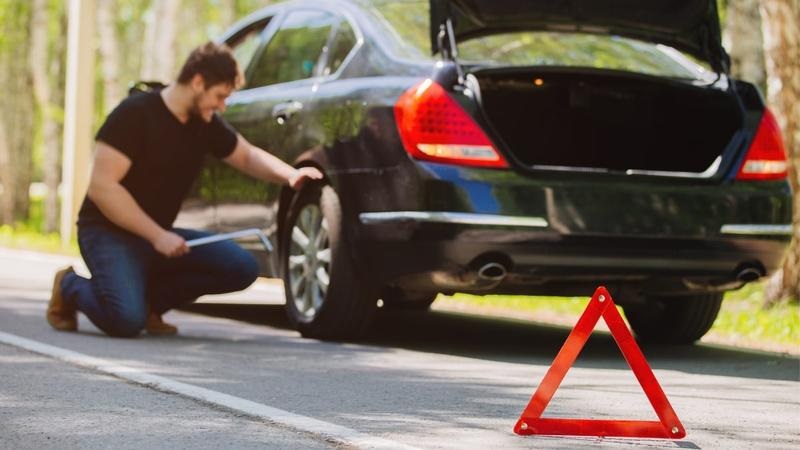Handling a Roadside Emergency

Experiencing a roadside emergency can be a stressful and unexpected situation. Whether it’s a flat tire, engine trouble, or an accident, knowing how to handle such emergencies is crucial for your safety and the well-being of others on the road. By being prepared and following proper protocols, you can navigate these challenging situations with confidence and minimize potential risks. If you’re not sure how to deal with a roadside emergency yourself, here are some of the most essential steps to deal with a roadside emergency effectively, providing you with the knowledge and guidance to handle unexpected situations on the road.
Stay calm and assess the situation
Stay calm and thoroughly assess the situation to ensure a safe and effective response. In moments of unexpected roadside emergencies, it is crucial to maintain a composed demeanor and carefully evaluate the circumstances at hand. Take a moment to draw in a deep breath, allowing yourself to regain focus and clarity. Next, maneuver your vehicle to a secure location, if feasible, aiming to find a spot away from the flow of traffic where you can park safely. By pulling over to the side of the road, you minimize the risk of potential collisions and give yourself the necessary space to address the situation appropriately. Moreover, don’t forget to activate your hazard lights, serving as an immediate warning sign for other motorists and heightening their awareness of your presence.
Call for help
Once you have ensured your own safety and that of your passengers, it is time to reach out for the appropriate assistance. If you have a functional phone within your reach, consider contacting the relevant emergency services based on the nature of the predicament you are facing. Dial the police hotline if the situation calls for their involvement, or contact the ambulance services if medical attention is urgently required. You can also you other forms of communication, especially if your car is equipped with one of those practical aerial brackets that might come in handy in lots of different scenarios. On the other hand, if your vehicle is covered by a warranty or roadside assistance service, it would be wise to connect with the designated service provider, ensuring prompt and specialized aid.
Stay inside your vehicle
While you wait for help to arrive, it is generally recommended to stay inside your vehicle unless absolutely necessary to exit. Remaining within the confines of your car can provide a protective barrier against potential hazards and lessen the risk of accidents. Be sure to keep your seatbelt fastened and refrain from standing near the roadside. By doing so, you decrease the likelihood of being struck by passing vehicles, maintaining a safe and secure environment within your automobile. However, if you find yourself in a situation where it becomes unsafe to remain inside the vehicle, such as in the presence of an impending collision or a fire, it is crucial to exercise extreme caution while exiting the vehicle. Carefully assess the surroundings and move to a secure location away from the road, ensuring that you are out of harm’s way before taking any further action.
Use warning devices
To effectively communicate the presence of an emergency and provide a clear warning to other drivers, it is important to utilize warning devices at your disposal. Setting up reflective triangles or flares at a safe distance behind your vehicle can significantly enhance visibility, alerting approaching drivers to exercise caution and be prepared for the unexpected. If your vehicle is equipped with hazard triangles or emergency lights, activating them will further augment awareness and ensure that your predicament is clearly noticed. By taking these precautionary measures, you contribute to a safer environment for both yourself and fellow motorists, mitigating the potential for further incidents or accidents.
Be mindful of strangers
During a roadside emergency, it is not uncommon for well-intentioned strangers to offer their assistance. While their intentions may be noble, it is essential to exercise caution when accepting help from unfamiliar individuals. Ensure that your doors remain locked and only lower your window enough to communicate effectively. Trusting your instincts is paramount; if you feel uncomfortable or uncertain about accepting aid, it is best to politely decline their assistance and wait for professional help to arrive. Remember, prioritizing your personal safety and well-being should always take precedence in these situations.
Dealing with a roadside emergency requires composure, preparedness, and quick thinking. By staying calm, calling for help, and taking appropriate safety measures, you can navigate these situations with confidence. Remember to prioritize your safety and follow the instructions of emergency personnel. Being prepared with essential supplies and documenting the incident afterward will also help streamline the recovery process. By following these essential steps, you can effectively handle roadside emergencies and ensure the well-being of yourself and others on the road.